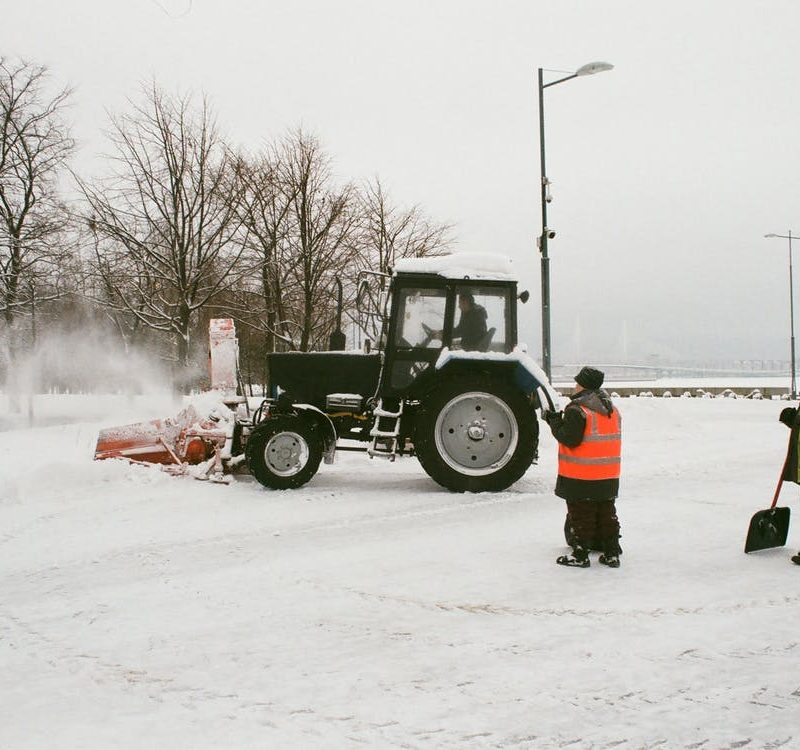Embarking on a roofing project is no small feat. Whether you are a professional contractor or a DIY homeowner, one of the crucial decisions you’ll need to make concerns waste management. Roofing materials, old shingles, and debris have to go somewhere, and a dumpster is often the most efficient and convenient option.
However, what size dumpster do you need for a roofing project? This is a question that can be daunting, especially if it’s your first time renting one. In this article, we will discuss how to determine the right dumpster size for your specific roofing job.
About Dumpster Rental
Renting a dumpster for a roofing project simplifies debris removal. It allows you to toss all your waste materials into one container, which is then hauled away at the end of your rental period. Many people find that dumpster rental takes a load off by providing a centralized, out-of-the-way area for waste, reducing project cleanup time. A service such as American Disposal Systems, for example, can facilitate this process, ensuring that your work site stays clean and safe without any hassle.
Understanding Dumpster Sizes
Dumpsters come in a range of sizes, typically measured in cubic yards. This measurement indicates the volume of material the dumpster can hold. Common sizes available for rental include 10, 20, 30, and 40 cubic yards. Each size serves particular types of projects, and selecting the right one helps avoid overspending or running out of space. Let’s dive into the factors that will help you make an informed decision.
Estimating Your Roofing Waste
To begin, you need an estimate of the debris your roofing project will generate. This involves considering the size of your roof and the materials used. Asphalt shingles, for instance, are heavier than metal panels or tiles, and thus, you may need a sturdier dumpster for the same-sized roof. A standard rule is that one square of roofing (equivalent to 100 square feet) generates about 250 to 360 pounds of debris. Gathering this info will guide you toward selecting the right dumpster size.
Typical Dumpster Size for Various Roofing Projects
- Minor Roof Repairs – For small repairs or partial re-roofing jobs, a 10-cubic yard dumpster might suffice. These are compact and can fit in a driveway without much hassle.
- Complete Roof Replacement – An average-sized home, usually having a roof area of around 1,500 to 2,000 square feet, could require a 20-yard dumpster. It’s a popular choice for residential roofing jobs.
- Large Residential or Commercial Projects – For extensive roofing projects, such as those on commercial buildings or very large homes, 30 to 40-yard dumpsters are suitable. They can accommodate a significant amount of roofing material and debris.
Factor in the Weight of Your Debris
When determining the dumpster size, it’s not just about volume; weight is also a critical component. Certain roofing materials are heavier than others. For instance, asphalt shingles are heavier than wooden shakes. Roofing jobs involving heavy materials like asphalt might need not only a large dumpster but also one that can handle the weight without breaching rental agreement terms. Keep a keen eye on weight limits when choosing your dumpster size.
The Versatile 20-Yard Dumpster
One of the most versatile and commonly used dumpster sizes for a variety of projects is the 20-yard dumpster. It offers enough space to accommodate waste from most residential roofing jobs without being too cumbersome for property placement.
In regions like South Jersey, a 20 yd dumpster rental in South Jersey is a highly sought-after option due to its balance of capacity and footprints. Its 20 cubic yard capacity is ideal for holding the debris from a roof that’s up to 2,000 square feet, making it a go-to choice for contractors and homeowners alike.
Do Your Homework on Permits
Before you rent any size dumpster, research local regulations and permit requirements. Some localities require permits to place a dumpster on the street or in your driveway. Knowing and adhering to these regulations is essential to avoid any legal issues or fines.
Think About Accessibility and Placement
The dumpster’s placement is often overlooked but plays a vital role. Consider whether the selected size will fit in the intended drop-off area. Also, factor in the requirement for easy access to the dumpster for waste loading. Make sure the drop-off location has no obstructive overhanging wires or branches.
Longevity of the Rental Period
How long will you need the dumpster? The duration of your rental can also affect the size you choose. If your project is extended over a few weeks, you should get a larger dumpster than needed for daily debris to reduce the frequency of pick-ups and potential overage fees.
Conclusion
There is no one-size-fits-all when it comes to dumpsters for roofing projects. By evaluating your roofing area and material weight and considering the project’s duration, you can select the most appropriate dumpster size. If in doubt, opt for a slightly larger dumpster than you think you might need to avoid additional fees for overfilling. Planning and choosing the right dumpster size will lead to a smoother, more efficient roofing project.
As you prepare for your roofing venture, make sure to consider all these factors carefully. By doing so, you will ensure that waste disposal is the least of your worries, allowing you to focus on the actual roofing work.







